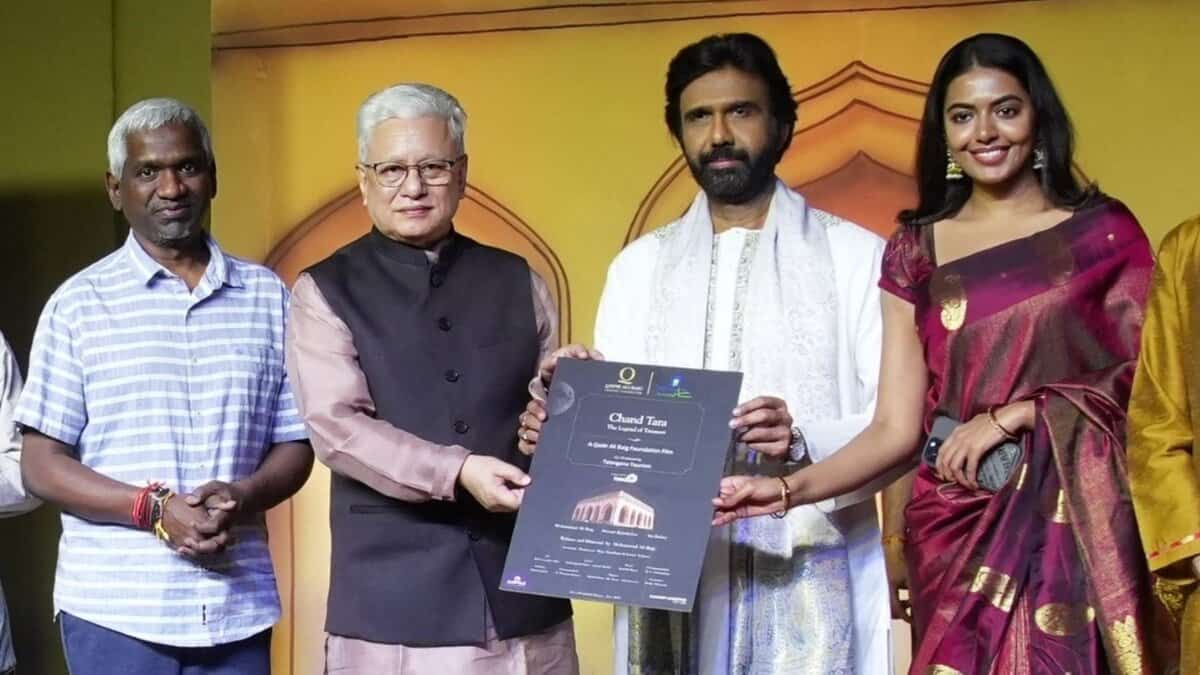Russian President Vladimir Putin will travel to India in December, the Kremlin said on Friday, 29th August. His visit comes at a time when ties between Moscow and New Delhi are becoming stronger after the United States imposed tariffs on India over its purchases of Russian oil.
President Putin will also meet Prime Minister Narendra Modi at the SCO summit in China’s Tianjin on 1st September, indicating the strength of the partnership between the two nations. PM Modi will also meet Chinese president Xi Jinping during his China visit.
This is going to be one of Putin’s few overseas trips after the International Criminal Court (ICC) issued a warrant against him regarding the Ukraine crisis. India is not a signatory to the ICC, so it is not bound to implement the warrant. Vladimir Putin visited Alaska in US earlier this month for a meeting with president Donald Trump. U.S. is also not a member of the ICC.
Putin’s India trip also highlights the fact that in spite of sanctions and political pressure, Russia has been able to hold on to important strategic partners like India.
Trump’s tariffs: bullying tactics against India
The Kremlin’s announcement comes against the backdrop of fresh U.S. tariffs on Indian goods. President Donald Trump has accused India of funding Russia’s war in Ukraine by buying discounted crude oil from Moscow. To pressure India, Trump’s administration has imposed a 50% duty on a wide variety of Indian goods, up from the earlier 25%.
The U.S. Department of Homeland Security formally notified the hike, saying the additional taxes were a reaction to “threats to the United States by the Government of the Russian Federation.” Any Indian product arriving after 27th August at 12:01 am (Eastern Daylight Time/EST) would face the extra duty, effectively doubling costs for Indian exporters.
#NewsFatafat | US Slaps Additional 25% Tariff on India Effective 12:01 AM ET, August 27#USTariff #IndiaUSRelations #TradeWar #GlobalTrade #TariffHike #InternationalBusiness pic.twitter.com/3cwCkrHLQY
— ET NOW (@ETNOWlive) August 26, 2025
Trump signed Executive Order 14329 authorising the move and has even threatened “very big consequences” for any country that continues to trade with Russia. While India has been directly targeted, curiously, Washington has avoided imposing similar penalties on other major buyers of Russian oil, including China and several European nations.
Trump first announced a 25% duty on Indian goods but he subsequently declared that he would increase it to 50% by adding 25% more as a penalty for purchasing Russian oil which he insisted “funded war in Ukraine.”
He had set the implementation date for 27th August. Interestingly, his government has been accusing India and the “wealthiest Indian families” of profiting from Russian oil while continually defending Beijing.
This uneven strategy has generated universal criticism that the U.S. is selectively employing tariffs as an instrument of bullying instead of an equitable global policy. For India, the tariffs remind it that economic coercion is being employed as leverage in geopolitics far beyond its own concerns.
India’s response: energy security first
India, however, has not taken this lying down. Prime Minister Narendra Modi was adamant in his response: “The pressure on us may increase, but we will bear it all.” He emphasized that national interests of farmers, small and medium-scale industries, and common citizens are given priority.
External affairs minister S Jaishankar also strongly endorsed India’s energy decisions, asserting that New Delhi would keep making choices that serve its strategic autonomy and national interest.
Dr Jaishankar pointed out that the US tariff issue is being misrepresented as “oil dispute”. He pointed out that bigger importers like China and European countries have not received the same criticism as India for buying Russian oil.
India has been purchasing more than a million barrels of Russian crude daily, most of it at discounted prices. These imports help India manage fuel costs for its 140 crore citizens, keeping inflation under check in a volatile global market. Indian officials have pointed out that after the war began, Europe diverted much of its oil supply, leaving India with limited options but to look toward Russia.
Jaishankar has also repeatedly reminded Western leaders of their double standards: Europe continues to purchase Russian liquefied natural gas (LNG) in massive quantities, and the United States still imports Russian uranium for its nuclear plants. Yet, India alone is being singled out and punished with tariffs.
Defence ties with Moscow
India’s ties with Russia are not limited to energy. Nearly 60-70% of India’s defence equipment originates from Russia, ranging from fighter jets to missile systems. New Delhi has consistently argued that abruptly cutting off these supplies would harm its national security.
Here too, Western criticism appears selective. NATO member Turkey purchased Russian S-400 missile systems in 2019. While it faced some sanctions, Turkey continues to remain a NATO member and engages in trade with Russia. India, on the other hand, is being targeted with harsher rhetoric despite not being bound by any alliance obligations to the West.
U.S. threatens even harsher sanctions
The Trump administration is not stopping with tariffs. A bill in the U.S. Congress proposes a 500% tariff on any nation continuing to purchase Russian oil. Though India is not named directly, it is clear who the intended target is. Some legislators have even threatened 100% “secondary tariffs” on goods from countries that help Moscow.
NATO leaders have also tried to pressure India, with Secretary General Mark Rutte warning that India and China risk new penalties if they do not cut their oil trade with Russia.
India’s response has been equally strong. During his recent visit to Washington, Jaishankar made it clear that “India’s energy security cannot be sacrificed.” Petroleum Minister Hardeep Puri also emphasised that India has diversified its oil sources, now buying from nearly 40 countries instead of 27 earlier, which gives it flexibility in case of disruptions.
Not about war, but about survival
Critics in the West argue that India’s oil purchases are helping Russia fund its war. But India has countered that it is not financing a war, it is simply ensuring affordable energy for its people. India has a population of 140 crore and growing demand, and it cannot pay more simply because America or Europe wants it to.
India has also made the world remember that it has always been pro-peace initiatives, ranging from donating humanitarian assistance to Ukraine to continuing to speak with both President Zelensky and President Putin. New Delhi has reiterated that India is not a belligerent in the war and should not be punished for focusing on its internal needs.
Double standards of the West
Numbers tell the story clearly. In 2022, the European Union paid over $120 billion to Russia for fossil fuels. In the same period, India’s payments were less than half that, around $50 billion. Despite this, Western governments have focused their criticism on New Delhi, ignoring their own continued dependence on Russian energy.
The irony is even deeper when we consider refined oil. Indian refineries process Russian crude and export the refined fuels to Europe. So, while European nations buy the final product from India, they simultaneously attack India for purchasing the crude in the first place.
This double game raises serious questions. Are sanctions about punishing Russia for what it has done in Ukraine, or are they about Western preservation of control over global trade flows and energy politics?
The bigger picture: global fairness
When we look at the bigger picture, the issue is not just oil. It is about fairness in the global order. The West cannot set rules that others must follow while quietly exempting themselves from the same. If Europe can keep buying LNG from Russia, and the U.S. can still import uranium, then India’s crude purchases should not be singled out.
India’s position is rooted in its right to act independently, balancing ties with all major powers while ensuring its economy remains stable. It has made clear that it will not allow its people to be held hostage to someone else’s war.
India’s strengthening ties with Russia despite pressure
And this is why Putin’s visit in December is so significant. At a time when Trump is trying to bully India into submission with tariffs, New Delhi is instead doubling down on its partnership with Moscow. Far from reducing purchases, Indian refiners have increased their intake of Russian crude. Defence cooperation continues, and now diplomatic engagement at the highest level will further cement ties.
For India, this is about strategic independence. It refuses to be a pawn in a larger power struggle between the U.S. and Russia. For Moscow, India remains one of its most dependable partners, both in energy and defence.
Putin’s visit will not just be a ceremonial event; it will be a message to the world that India is charting its own course. It is not bowing down to U.S. pressure, and certainly not compromising the needs of its people for geopolitical posturing.

















































